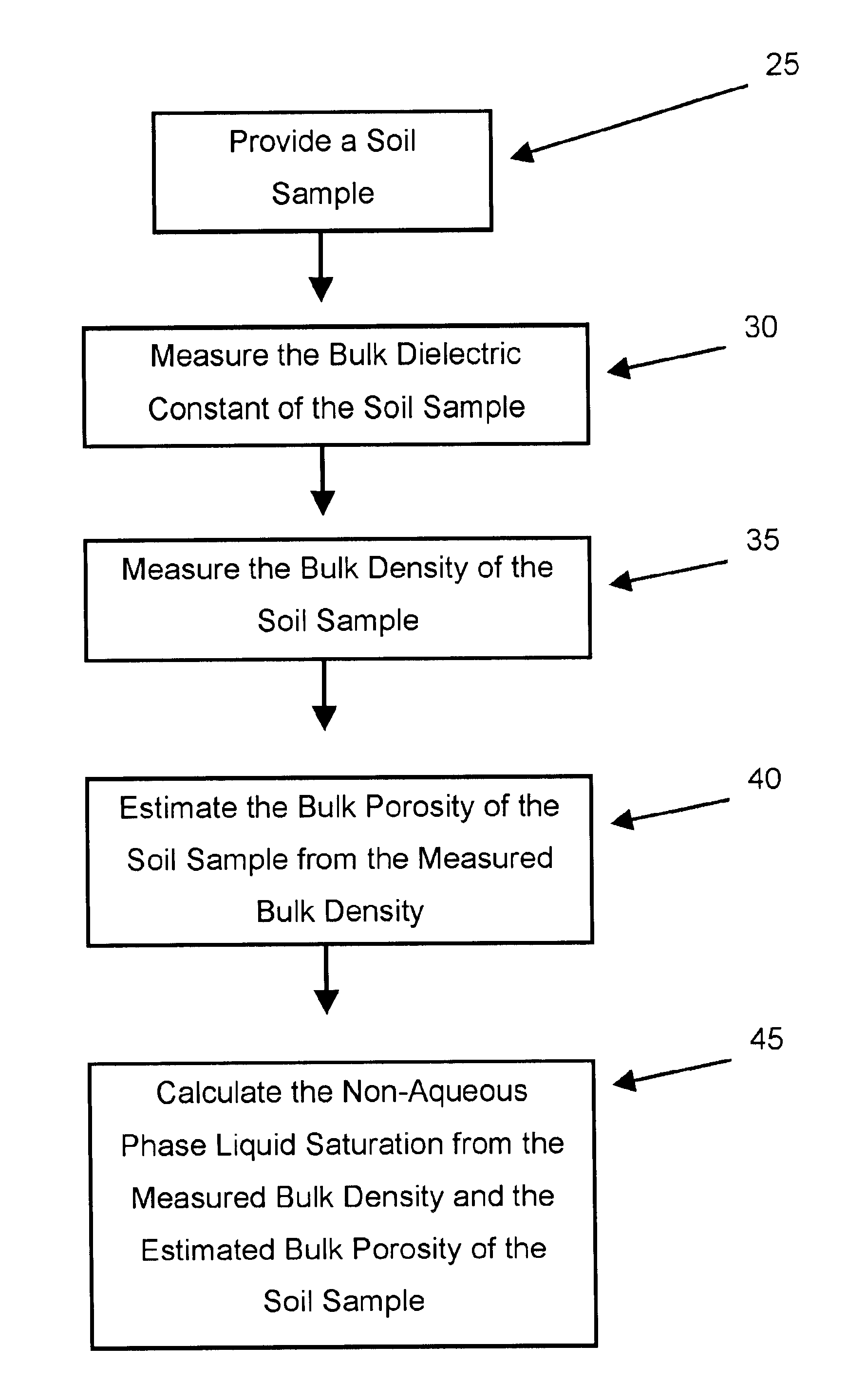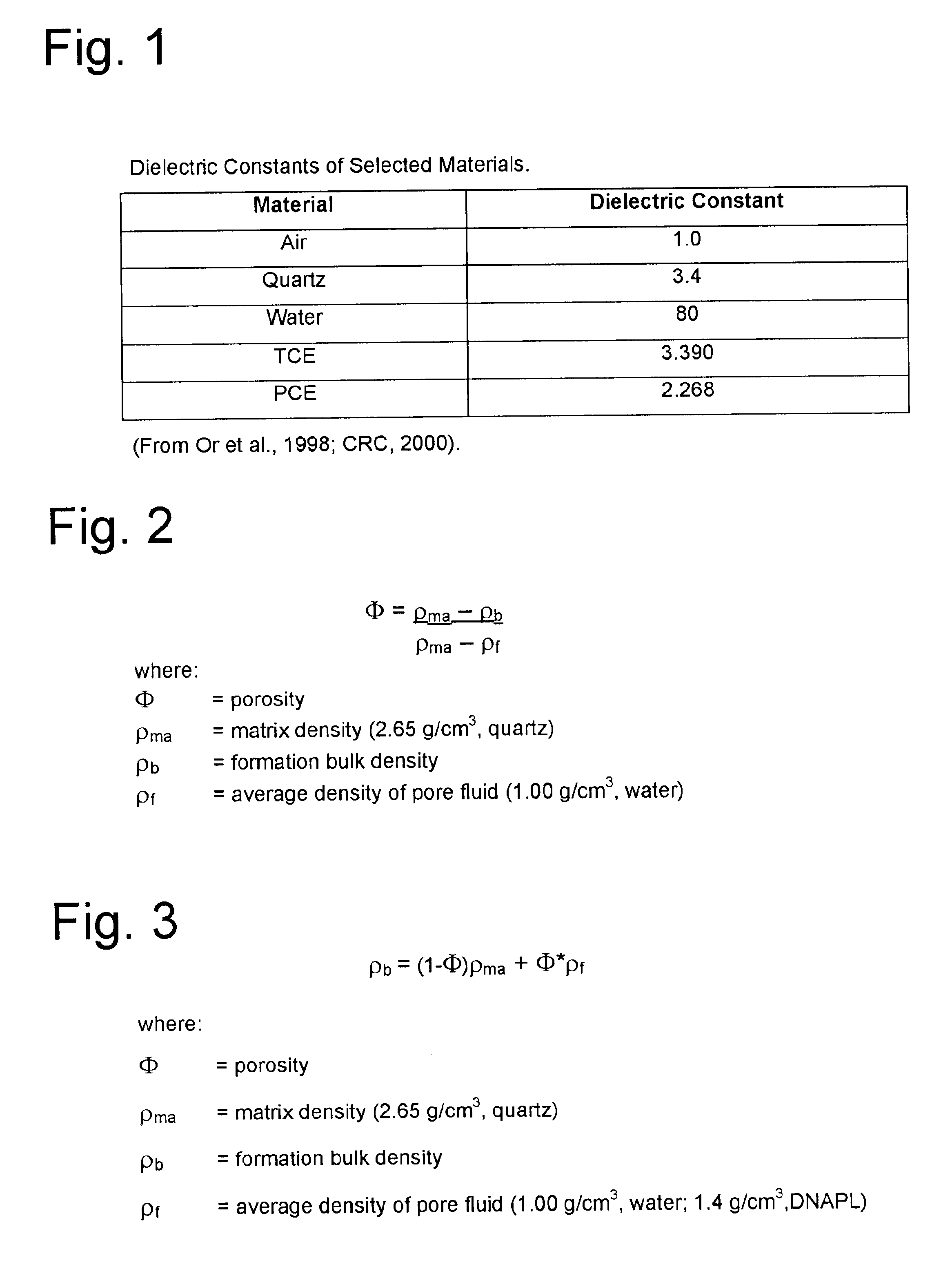Geophysical method for quantification of dense non-aqueous phase liquids in the subsurface
a non-aqueous phase liquid and geological method technology, applied in the field of soil contaminants, can solve the problems of difficult to quantify the volume of non-aqueous phase liquids in the subsurface, high problem of contaminants, and ineffective methods for quantifying the amount of dnapl presen
- Summary
- Abstract
- Description
- Claims
- Application Information
AI Technical Summary
Benefits of technology
Problems solved by technology
Method used
Image
Examples
Embodiment Construction
The present invention utilizes the measurements of the bulk dielectric and the bulk density of the subsurface to detect and quantify the volume of DNAPL present at a sample point.
The dielectric constant of a medium is the ratio squared of the electromagnetic propagation velocity in a vacuum relative to the velocity in that medium. The variables which can affect this electrical property include soil texture, water content and density. The dielectric constant values that can be used to identify materials in the subsurface are presented as shown in FIG. 1. It is known that DNAPLs have very low dielectric constant values (3-4) compared with water (80). Because the dielectric values vary greatly between water and DNAPL, displacement of pore water with DNAPL significantly changes the measured value of the balk dielectric constant. Replacing water in pore spaces with DNAPL will cause a decrease in the dielectric constant.
An electronic piezocone (cone penetrometer, or CPT) is used to provid...
PUM
| Property | Measurement | Unit |
|---|---|---|
| porosity | aaaaa | aaaaa |
| matrix density | aaaaa | aaaaa |
| density | aaaaa | aaaaa |
Abstract
Description
Claims
Application Information
 Login to View More
Login to View More - R&D
- Intellectual Property
- Life Sciences
- Materials
- Tech Scout
- Unparalleled Data Quality
- Higher Quality Content
- 60% Fewer Hallucinations
Browse by: Latest US Patents, China's latest patents, Technical Efficacy Thesaurus, Application Domain, Technology Topic, Popular Technical Reports.
© 2025 PatSnap. All rights reserved.Legal|Privacy policy|Modern Slavery Act Transparency Statement|Sitemap|About US| Contact US: help@patsnap.com



